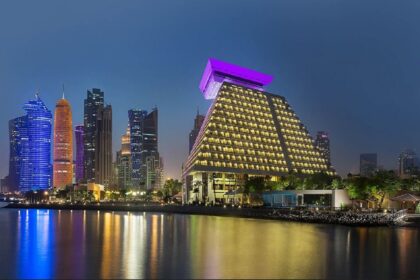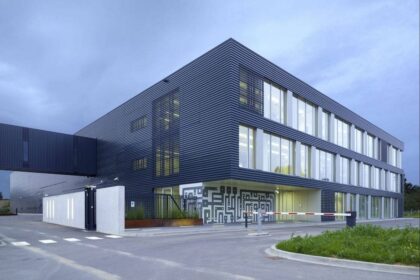Globalinx, a leading operator in subsea connectivity, is expanding its Virginia Beach Cable Landing Station (CLS) to support the growing demand for high-capacity, low-latency infrastructure. The expansion is part of the company’s commitment to strengthening Virginia Beach’s position as a major hub for global digital connectivity. This development will accommodate four additional subsea cables alongside the three operational cables in the neighboring Telxius CLS.
Project Details: New Infrastructure and Increased Capacity
The expansion involves the installation of four horizontally directional drilled marine bore pipes, which will be routed into two beach manholes. Additionally, six miles of front haul conduits will be constructed to support the new subsea cables. The construction process has already commenced, with the completion date set for March 31, 2025.
Globalinx’s Virginia Beach CLS will become even more crucial as AI and cloud applications push the need for faster, more reliable data transmission. These new infrastructures will help meet this demand, providing greater bandwidth and reduced latency for users across the globe.
Key Players: Existing and Future Subsea Cables
The Virginia Beach CLS currently hosts several high-capacity subsea cables that connect critical international locations. The BRUSA, Dunant, and MAREA cables are operational at the facility, and the Confluence-1 cable is scheduled to land in 2026. These cables support the growing data traffic, especially from AI and cloud computing services, which are becoming integral to business operations and consumer experiences worldwide.
The Role of the Meet-Me Room and Collaborative Infrastructure
Globalinx’s CLS is strategically located next to the Telxius CLS, creating a collaborative environment in the shared Meet-me Room. This co-location helps streamline connectivity between subsea cables and offers customers the flexibility of both dark and lit fiber services. The integration of such high-performance infrastructure ensures that the Virginia Beach campus can handle increasing global digital traffic.
Strategic Importance of Virginia Beach in Global Connectivity
The expansion of Globalinx’s Virginia Beach CLS highlights the city’s pivotal role in the global subsea cable ecosystem. Positioned as a key gateway for transatlantic and transpacific connectivity, the region is poised to further capitalize on the growing demand for global digital services. As companies continue to scale their AI and cloud offerings, the demand for reliable and fast infrastructure solutions will only intensify, positioning Virginia Beach as a critical asset for future-proofing connectivity needs.
FAQ Section
What is the Virginia Beach Cable Landing Station (CLS)?
The Virginia Beach CLS is a facility that connects subsea cables between continents, providing high-capacity, low-latency infrastructure for data transmission. It supports critical services like AI, cloud computing, and global digital connectivity.
How many subsea cables currently land at Globalinx’s Virginia Beach CLS?
As of now, three major subsea cables—BRUSA, Dunant, and MAREA—land at the Globalinx Virginia Beach CLS, with Confluence-1 expected to join in 2026.
What are the benefits of the Virginia Beach CLS expansion?
The expansion will support the landing of four new subsea cables, increasing the capacity for faster, more reliable data transmission. This expansion addresses the growing demand for AI and cloud services.
When will the expansion of the Virginia Beach CLS be completed?
The expansion project is slated for completion by March 31, 2025.
Why is Virginia Beach an important location for global connectivity?
Virginia Beach’s strategic location as a subsea cable landing site makes it a key hub for transatlantic and transpacific communications. The city’s infrastructure supports high-speed, low-latency data transmission essential for modern digital services.



















